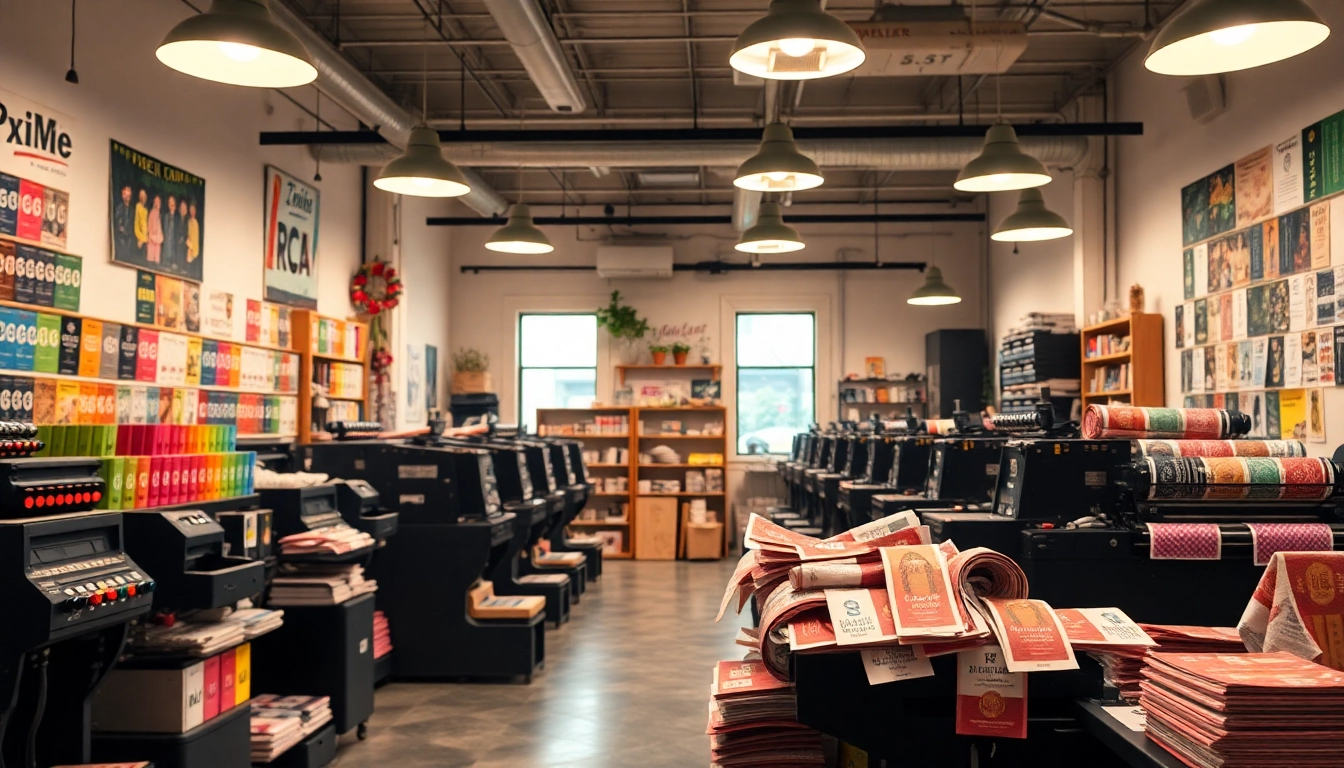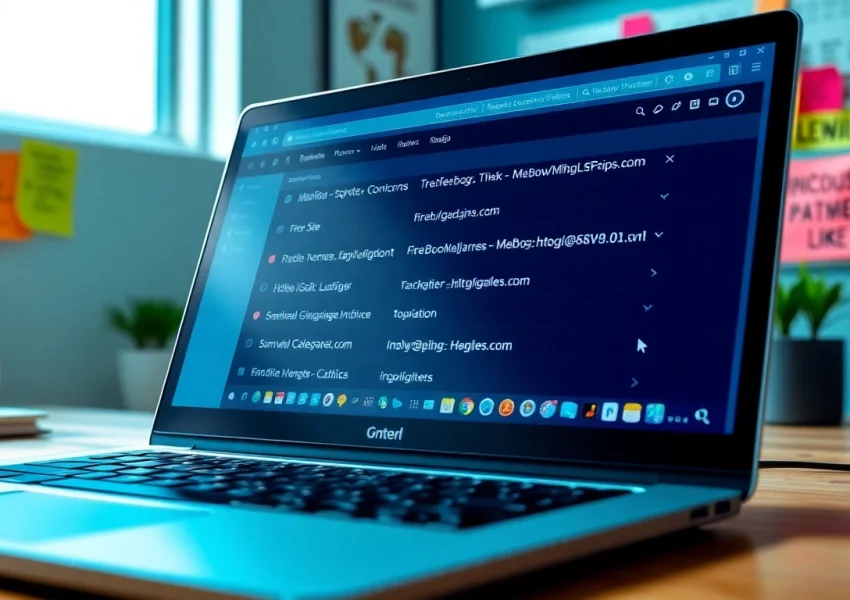Understanding the Importance of Labels and Printing
In today’s competitive market, effective branding is essential for business success, and one of the most critical components of branding is the use of labels and printing. Labels serve as a fundamental tool in communicating brand identity and product information, while well-executed printing solutions elevate their impact. Understanding their importance can help businesses leverage these elements effectively to captivate their target audience and enhance their market presence.
The Role of Labels in Brand Identity
Labels act as direct representatives of a brand. They are often the first point of contact between the consumer and the product. Effective labeling not only provides essential information about the product—such as ingredients, usage instructions, and regulatory compliance—but also conveys the brand’s ethos, values, and personality. A well-designed label ensures that the product stands out on the shelf, captures customer attention, and resonates with target audiences, ultimately influencing purchasing decisions.
Types of Printing Techniques for Labels
The printing technique chosen for labels can significantly affect their quality, durability, and overall appearance. Here are some common techniques:
- Flexographic Printing: Known for its versatility and cost-effectiveness, flexographic printing is ideal for producing large volumes of labels. It delivers high-speed printing and is often used for labels in various industries, from food to pharmaceuticals.
- Digital Printing: This technique allows for on-demand printing with minimal setup costs, making it perfect for short runs and custom designs. Digital printing is known for its high-quality output and the ability to print variable data, like personalized labels.
- Offset Printing: Often used for high-volume runs, offset printing delivers exceptional quality and color accuracy. Although not as flexible as digital printing, it remains a popular choice for traditional label solutions where consistency is critical.
- Screen Printing: This technique excels in producing vibrant colors and is commonly used for specialty labels, such as those requiring metallic inks or illuminated effects.
Benefits of Professional Labels and Printing Solutions
Investing in professional labels and printing solutions offers various advantages, including:
- Enhanced Brand Recognition: Quality labels contribute significantly to brand identity and customer recognition, promoting a cohesive brand image across different products and platforms.
- Improved Product Perception: Well-designed and printed labels can elevate the perceived value of a product, positively influencing customer purchase behavior.
- Compliance and Safety: Professional labeling ensures that products meet industry regulations and safety standards, thus reducing the risk of legal issues and recalls.
- Strategic Marketing Opportunities: Labels can be used as a marketing tool by incorporating unique designs, color schemes, and promotional messaging that can engage and attract consumers.
Choosing the Right Labels for Your Business Needs
Understanding the specific requirements of your business can help in selecting the most appropriate labeling solutions. The right labels can dramatically affect everything from consumer engagement to production efficiency.
Exploring Materials and Finish Options
The choice of label material and finishing options can influence not only the aesthetic appeal but also functionality and durability. Common materials include:
- Paper Labels: Ideal for indoor use, paper labels are cost-effective and available in a variety of finishes.
- Polyester Labels: Durable and weather-resistant, polyester labels are suitable for outdoor products and harsh environments.
- Vinyl Labels: Flexible and waterproof, vinyl is perfect for products that need to be labeled for long durations and in diverse conditions.
- Specialty Materials: These include options like metallic, holographic, or transparent labels that can provide a unique visual effect and enhance brand identity.
Finishing options like gloss, matte, or satin coatings can also impact how a product is perceived. Gloss finishes add vibrancy and depth, while matte finishes provide a more sophisticated look.
Custom vs. Standard Label Solutions
When selecting labels, businesses must decide between custom and standard options.
- Standard Labels: These are pre-designed and commonly used for a variety of products. Their primary advantage is cost-effectiveness, primarily for simpler needs.
- Custom Labels: Tailored specifically to meet unique business requirements, custom labels allow for creative designs, shapes, sizes, and materials. Although they may come at a premium price, they often deliver greater value by enhancing brand identity and engaging customers effectively.
Label Design Best Practices
A well-thought-out design is essential for effective labeling. Key strategies include:
- Clear Branding: Always include recognizable branding elements, such as logos and color schemes, to foster recognition.
- Legibility: Use clear, readable fonts and maintain a good contrast between text and background.
- Information Hierarchy: Organize information so that the most crucial details stand out, guiding consumers through important messages easily.
- Regulatory Compliance: Ensure that all mandatory information, such as nutritional facts or ingredients, is correctly displayed and in compliance with regulatory standards.
Top Trends in Labels and Printing for 2023
The label printing industry is continuously evolving, driven by technology advancements and changing consumer preferences. Staying abreast of current trends can help brands remain competitive and relevant.
Eco-Friendly Printing Options
With the rise of sustainability consciousness among consumers, eco-friendly printing options have become more popular. Companies are moving towards:
- Water-Based Inks: These inks are less toxic compared to solvent-based alternatives and are more environmentally friendly.
- Recyclable Materials: Using recyclable label materials helps brands appeal to environmentally-conscious customers and contributes to sustainability initiatives.
- Biodegradable Labels: Made from plant-based materials, these labels decompose naturally over time, reducing environmental impact.
Technology Innovations in Label Production
Technological innovations are reshaping the label printing landscape. Some notable advancements include:
- Digital Printing Technologies: Enhanced digital printing capabilities are allowing for higher quality, faster turnaround times, and more personalized labels.
- Automation and Smart Technology: Automated processes help reduce labor costs and improve consistency and precision in printing.
- Augmented Reality (AR): Brands are beginning to incorporate AR technology into labels, allowing customers to interact with products in innovative ways, thereby enhancing engagement.
Personalization and Customer Engagement Strategies
Consumers increasingly expect personalized experiences, and labels are a significant opportunity for engagement. Strategies include:
- Variable Data Printing: Customize labels for individual customers or specific market segments, making the brand feel more relevant to the consumer.
- Interactive Labels: Creating labels with QR codes or AR features encourages customers to engage with the brand, creating an interactive experience.
- Storytelling Labels: Labels that tell a story about the brand or product can create emotional connections with consumers, fostering loyalty and brand advocacy.
How to Implement an Effective Labels and Printing Strategy
To capitalize on the benefits of labels and printing, businesses must establish a comprehensive strategy. This involves various steps to assess current practices and implement new solutions effectively.
Steps to Assess Your Current Labeling Process
The first step is understanding your existing labeling processes and materials:
- Review Current Labels: Analyze your current labels for design, materials, and performance. Are they meeting your branding and compliance needs?
- Gather Feedback: Solicit feedback from customers and employees regarding label effectiveness and appeal. Understanding their perspectives can inform necessary changes.
- Evaluate Printing Costs: Assess the costs associated with your current printing processes to identify opportunities for better pricing or efficiencies.
Setting Printing Goals and Measuring Success
Once you have benchmarked your current processes, establish clear goals for your label printing strategy, including:
- Quality Improvement: Aim for higher-quality labels that better represent your brand.
- Cost-Effectiveness: Set benchmarks for reducing label production costs without compromising quality.
- Customer Satisfaction: Measure improvements in customer engagement or sales attributable to changes in labels.
Use performance metrics like customer feedback, sales data, and compliance rates to gauge success and make adjustments as needed.
Working with Label Printing Experts
Partnering with professionals in label and printing solutions can be a game-changer. Experts can:
- Provide Insights: They are familiar with industry trends and can recommend innovative solutions that align with your goals.
- Offer Quality Assurance: Professionals can help ensure that your labels are printed to the highest standards, maintaining both durability and attractiveness.
- Facilitate Customization: They can assist in creating tailored solutions that meet precise business needs, from design to material selection.
Case Studies: Successful Brands Using Labels and Printing Effectively
Real-world examples can illustrate how effective labels and printing solutions propel brands to success. Here are two compelling case studies.
Brand A: Transforming Identity with Custom Labels
Brand A, a newcomer in the organic skincare market, faced the challenge of standing out in a saturated market. They redefined their brand identity using custom labels, focusing on eco-friendly materials and unique designs that told the story of their brand’s commitment to sustainability. The result was a 40% increase in sales within just six months, showcasing the power of tailored labeling in driving brand perception and consumer engagement.
Brand B: Leveraging Innovative Printing Techniques
Brand B, a popular beverage company, decided to revamp its label design using digital printing technologies. By embracing variable data printing, they personalized labels for limited edition releases, incorporating unique designs for different seasons. This strategy not only increased brand loyalty but also drove a significant rise in social media engagement as customers shared their unique finds. This case emphasizes the importance of innovation in label printing to foster customer engagement.
Lessons Learned from Labeling Success Stories
These case studies reveal important lessons for businesses looking to optimize their labeling strategies:
- Custom labels can significantly enhance brand identity and consumer perception.
- Embracing innovative printing techniques, such as digital printing, opens new avenues for personalization and customer engagement.
- Understanding consumer needs and preferences is crucial to designing effective labels that resonate with target audiences.




